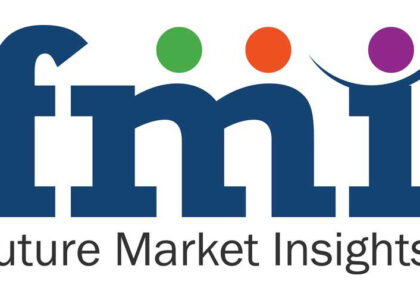The global non-woven fabrics market is expected to witness strong growth, with a projected compound annual growth rate (CAGR) of 7.0% from 2022 to 2032. By the end of the forecast period, the market is anticipated to reach a valuation of US$ 82,345.9 million. This growth is primarily attributed to the advantageous qualities of non-woven fabrics, notably their lightweight nature.
Non-woven fabrics are in high demand across various industries, particularly in textiles and healthcare, owing to their unique characteristics. These materials are easily accessible, reliable, lightweight, versatile, and convenient to transport, which contributes to their increasing popularity. They are produced by bonding fibers together through the application of pressure, heat, and chemical agents, resulting in cohesive fabrics that resemble textiles. Non-woven fabrics are favored over traditional woven materials like linen, cotton, silk, and wool due to their lightweight nature
The simplicity of handling high-tech, specially manufactured non-woven fabrics sets them apart from materials that require weaving or knitting. This factor has led to a global increase in non-woven fabric sales over the projected period. These fabrics find applications in various industries such as footwear, industrial workwear, chemical defense suits, insulation and protection gear, and interlinings. The non-woven materials are extensively used in industries such as filtration, personal care, automotive, and textiles.
For More Insights on this Market, Get A Sample Report @ https://www.futuremarketinsights.com/reports/sample/rep-gb-4012
The textile industry’s growth and the increasing demand for non-woven hygiene products in the healthcare industry are key drivers of the non-woven fabrics market. The inherent qualities of non-woven fabrics, such as their ability to expand under tension, make them suitable for absorbing shocks and capturing flying objects. This characteristic has resulted in greater usage of non-woven fabrics in the construction and automobile industries. Each of these factors contributes to the expansion of the non-woven fabrics market throughout the forecast period
“Rising adoption in diverse industries such as hygiene, personal care, automotive, filtration, etc., promotes the global growth of the non-woven fabrics market over the forecast period,” says an FMI analyst.
Key Takeaways:
- High demand from various industry verticals strengthens the market prospects for non-woven fabrics.
- Volatility and high costs of raw materials may stunt the target market growth.
- The non-woven fabric market in North America accounts for 15% of the global market share.
- Europe’s non-woven fabric market holds 30% of the total market share.
- Start-ups in this market are keen on developing additional product properties to boost the adoption rate of non-woven fabrics.
Speak to Our Analyst @ https://www.futuremarketinsights.com/ask-the-analyst/rep-gb-4012
Key Insights oF The Report
- Key Trends in the non-woven fabrics market
- New Advancements in Production Technologies
- New Product Launches, Expansions of non-woven fabrics market
Competitive Landscape
E.I. du Pont de Nemours & Co, Ahlstrom Corporation, Avintiv, Inc., Kimberly-Clark Corporation, P.H. Glatfelter Co, Freudenberg SE, Suominen Corporation, Toray Industries Inc., Albarrie, and others are some of the major players in the non-woven fabrics market profiled in the full version of the report.
Leading market players are focusing on utilizing novel and innovative techniques to enhance product quality and durability. These firms are interested in developing new product lines and expanding their production capacities to strengthen their market position.
Regional Analysis
Established eCommerce Channels in North America to Uphold the Adoption Trends
It is projected that North America will hold a significant share in the non-woven fabrics market. Currently, North America is holding 15% of the total non-woven fabrics market share.
Owing to the rapid economic development of this region and rising disposable income, there is a rising domestic demand for hygiene products. In addition to this, the online sales channel is a prominent part of the region’s economy, which generates high revenue for the market. All-in-all, North America is likely to have steady non-woven fabrics market growth in the upcoming years.
Get 20% Discount @ https://www.futuremarketinsights.com/request-discount/rep-gb-4012
Key Market Segments in the Non-Woven Fabrics Market
By Polymer Type:
- Polypropylene (PP)
- Polyethylene (PE)
- Polyethylene terephthalate (PET)
- Wood pulp
- Rayon
- Others
By Function:
- Disposables
- Durables
By Application:
- Hygiene
- Medical
- Filtration
- Automotive
- Building & construction
- Others
By Technology:
- Spunbond
- Wet Laid
- Dry Laid
- Air Laid
By Region:
- North America
- Latin America
- Asia Pacific
- Middle East and Africa
- Europe
About FMI
Future Market Insights, Inc. (ESOMAR certified, Stevie Award – recipient market research organization and a member of Greater New York Chamber of Commerce) provides in-depth insights into governing factors elevating the demand in the market. It discloses opportunities that will favor the market growth in various segments on the basis of Source, Application, Sales Channel and End Use over the next 10-years.
Contact Us:
Future Market Insights Inc.
Christiana Corporate, 200 Continental Drive,
Suite 401, Newark, Delaware – 19713, USA
T: +1-845-579-5705
For Sales Enquiries: sales@futuremarketinsights.com
LinkedIn| Twitter| Blogs


